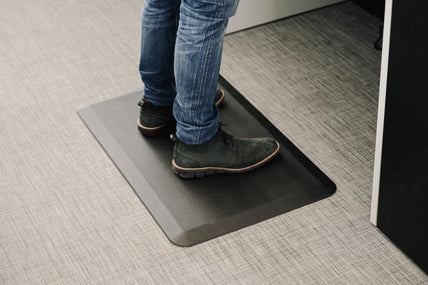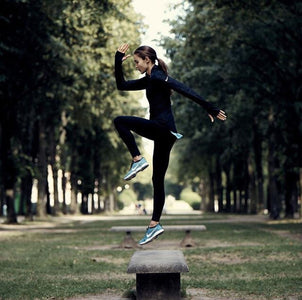Powerful insights from health experts in ‘The Sitting Epidemic’
By Daniel Angelini on June 21, 2019When writing ‘The Sitting Epidemic’ we interviewed a variety of health experts from leading medical practitioners to scientists and educators to provide a holistic view and another dimension of expertise on the issues at play with our sedentary modern lifestyles. These insights confirm the health implications of our working environments and what we can do about it in a practical and effective manner.
At MOVI, we imagine a world where going to work at a desk makes you healthier.
By writing this book, our aim is to provide you with a wealth of information with advice on best approaches to the sitting epidemic.
The experts we interviewed had some really interesting insights on sedentary behaviours in the modern world. Here are some key points they shared with us:
Our bodies need postural changes
There are multiple reasons why our bodies are not meant to be sitting. As well as adverse changes in muscle metabolism, lack of stimulation that our vascular systems need, and many other important health-related factors, regular postural changes are essential for our musculoskeletal health particularly in avoiding low back pain and a range of other muscle and joint problems. More movement keeps the whole system in good shape. Professor Neville Owen
Head of the Behavioural Epidemiology Laboratory at the Baker IDI Heart and Diabetes Institute, Distinguished Professor in Health Sciences at Swinburne University of Technology PhD

Our bodies are designed to be active
We are designed to be active people. Humans developed to walk and move on two limbs, standing upright; many don’t realise just how unnatural sitting is. There is much less pressure on the spine when standing compared with sitting. If we were built to sit there would be less pressure on our spine when we sit. And prolonged sitting is clearly terrible for overall health, there is now so much research confirming this.Dr David Oehme
Neurosurgeon & Spine Surgeon, MBBS (Honours) PhD FRACS
Our bodies thrive with movement
Humans are designed as very efficient beings to do many functional tasks, and all of them require moving. Our structure is that of standing, being active, moving, needing to hunt and gather, which is what we were initially designed to do. We’ve got the dexterity of hands and fingers but also our upper and lower limbs are completely independent of each other. The anatomical and biomechanical structure of the human being is not designed to be inactive. Our bodies refined over thousands of years to become what they are, which is extremely efficient and fascinating. Ryan Ebert
Physiotherapist & Director of PHW Group BSc. Physio (Hons), Dip Bus, Dip Mgt
We used our bodies for survival
Through the ages we have relied on our bodies for survival; for hunting, gathering, farming, construction and household chores – all physical tasks. Only in the very recent period of humanity have we shifted from mainly physical jobs to sedentary jobs, accompanied by largely sedentary pastimes. We need to use our bodies to maintain optimal functionality. Dr. Lina Engelen
Research Fellow at The University of Sydney PhD, MSc

Muscle atrophy when we don’t move
It’s a law of nature that whatever isn’t being used wilts and dies, and this is exactly the case with the human body. If you were to break your shoulder and couldn’t move your arm for 8-10 weeks,your entire arm would gradually begin atrophying and wilting before your eyes. Nature makes her message very clear, “use it or lose it!”. This law applies for everything within the human body, and our minds as well. Therefore, a sedentary person begins to become flabby and poorly conditioned throughout their entire body, which inevitably exposes them to a range of different health problems. Matthew Bate
Former AFL Footballer & Co-Founder of 365 Days of Wholeness BSci MSci (holistic nutrition), PhD, Certified Holistic Nutrition Practitioner










